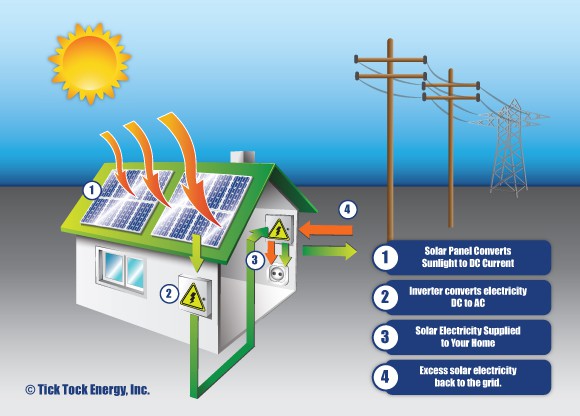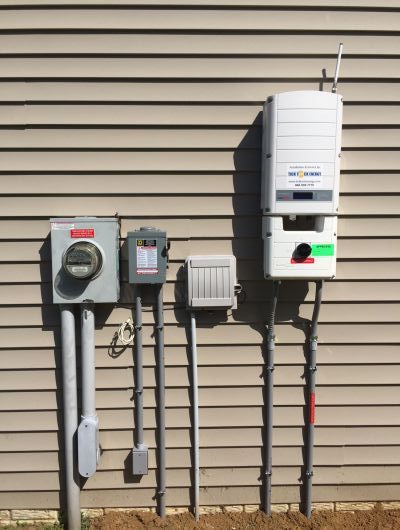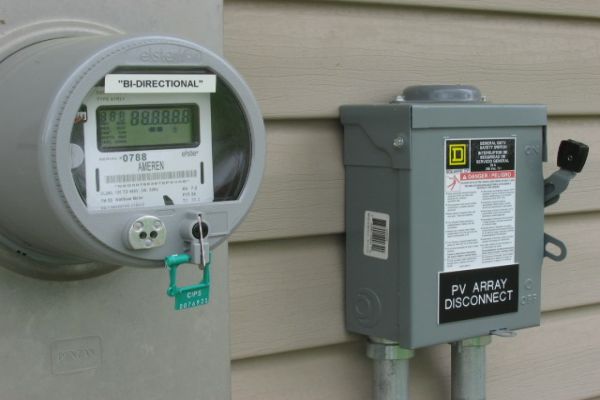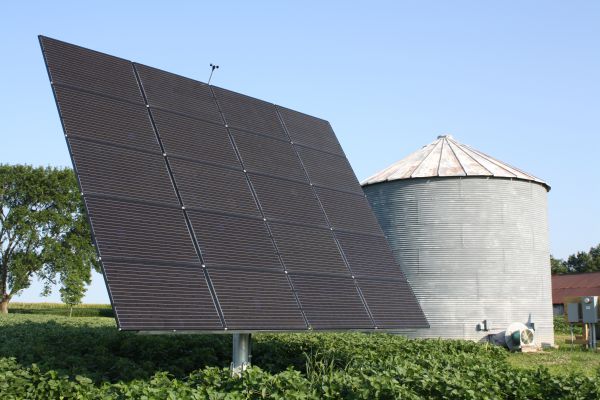
Solar Interconnection
Most solar power systems are “grid-tied.” This means the solar system can potentially send electricity to the utility grid when your home or farm is using less power than you’re generating. When we install solar on your property, we will “interconnect” the system on your side of the meter. As a new owner of a small power plant connected to the grid, you must follow the “interconnection” guidelines provided by your local electric utility. A basic residential solar interconnection diagram shown here illustrates this setup.

Solar Net Metering
When researching solar power systems, you may have come across this unique topic and asked: “what is net metering?” Solar Net Metering is a great incentive that your electric utility might offer. The purpose of the net meter (or net energy metering, NEM) is to measure power “delivered” (DEL) to your house or “received” (REC) by the utility from your solar array. At the end of the month, excess kWh credits are used to offset power delivered to your house. The “net” power delivered to your house forms the basis for calculating your electric bill for that month.
At the end of the month, if you generated more power than you consumed, excess kWh credits carryover to the next month. The monthly carryover then continues month after month. Depending on your utility, excess credits expire at the end of each quarter, bi-annually, or annually. Some utilities may pay for any end of term excess but many have a “use-it or lose-it” policy and no value is provided.

Other Solar Net Metering Policy Variations:
Utilities often have a size limit for offering net metering. In the Midwest, many rural electric cooperatives have a limit (e.g. 20 kW AC) where solar or wind systems below the defined limit are eligible for net metering. For systems larger than the defined limit, any excess power produced at the end of one month is typically paid at the utilities avoided cost of power. The utility’s avoided cost is often the wholesale rate of electricity and excludes their cost of transmission and distribution (T&D charges) and their overhead costs. The avoided cost rate is typically about one third of the full retail case.

Puzzled? Don’t worry, we’re here to help you understand!
Solar Net Metering & Solar Sizing Strategies
Solar net metering policies will typically define a project size where net metering is eligible. For example, net metering may be only available for systems 10 kW and below. Keep in mind that many utilities recognize that as 10 kW AC and not DC. Solar produces direct current, or DC, and the inverter changes the DC power to alternating current, or AC. Some utility companies in their push to limit the netmetering benefit may define the the 10 kW cap as the system’s DC-rated capacity. In the end, the utility company only cares about the AC output and AC output is governed by your inverter’s rating. For example, a 12 kW (DC) solar array connected to an inverter with a rated AC output of 10 kW (AC) may qualify for a solar net metering policy with a 10 KW limit. Other utilities may not have a limit, or may allow much higher capacity installations.
There are various electrical losses as power is converted from DC to AC. From your solar array to inverter, overall losses can range from 9 to 15% depending on the efficiency of your equipment, quality of your electrical installation, shading, snow cover, electrical equipment mismatch, and other factors.
There are many variations in solar net metering policies from utility to utility. Net metering can also be a confusing matter. Many solar companies don’t have a good grasp of these policies and their estimate of return on investment (ROI) could be misleading or incorrect.
That’s where we step in. At Tick Tock Energy, our solar interconnection and solar net metering experts will help you understand your utility’s policy and optimize your investment. We handle the entire solar interconnection and solar net metering application process to make it easy and stress-free for you.
Contact us today to get started.



